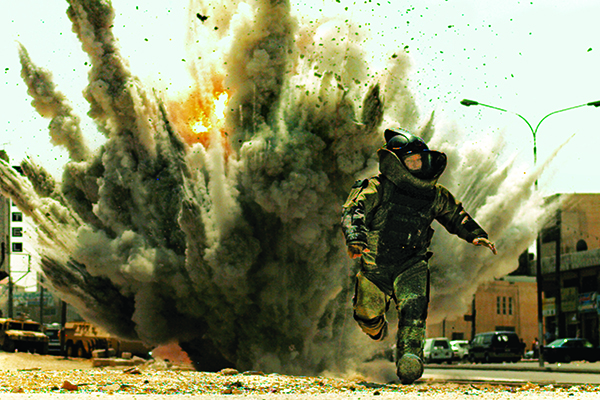Introduction
The need to protect military personnel, infrastructure, and assets has increased to rising lethality of weapons and acts of terrorism. Advanced materials and technologies, unmanned systems, and artificial intelligence-based surveillance and detection systems are driving modernisation requirements.
The subject will be discussed at the Force Protection India 2023 seminar being organised on 9 May 2023.
Perimeter Protection
Perimeter protection is provided by various types of fences made of barbed wire of chain link or both, (galvanized or zinc coated) made of steel or Aluminum.
The terrorist attacks at Pathankot Air Base (2 Jan 2016), Uri Brigade HQ (18 Sep 2016) and Nagrota Corps HQ (29 Nov 2016) prompted the Armed Forces to draw up elaborate plans for protection of their assets.
The traditional perimeter security platforms have been replaced by advanced perimeter security platforms with the use of advanced technologies, such as AI, ML, computer vision and facial recognition.
Intruder Detection
Intruder Detection at installations and bases requires a number of measures. These include camouflage and concealment, physical security measures using security cameras, motion sensors and alarms. Access control measures for important buildings include such as keycard systems and biometric scanners.
Implementing physical security measures such as barriers, roadblocks, and checkpoints can help prevent intruders into a secure area.
Smart fences are used in conjunction with different detection systems to suit terrains and conditions, with drones, thermal cameras and night vision equipment to detect and respond swiftly deliver effective results.
Border Infiltration
Infiltration by terrorists across land borders can be reduced by installing surveillance equipment such as cameras and sensors to detect and deter terrorist infiltration.
Border fencing erected by India along its borders with Pakistan and Bangladesh primarily consists of concertina wire, barbed wire, steel pickets, concrete walls with floodlighting and high-tech surveillance (through drones, cameras and motion sensors).
Personnel and Platform Protection
Soldiers need to be provided high-quality body armour, helmets, and gas masks can help protect them from physical and chemical threats. New technologies are required to upgrade protection against high velocity bullets with greater penetration power.
Composite materials are often used in bullet-proofing applications because they can provide a high level of protection while remaining lightweight and flexible.
Some common types of composites used for bullet-proof vests, helmets, and other body armor. These include ceramic composites such as Aramid fibres such as Kevlar and Twaron, polyethylene fibres such as Spectra and Dyneema, Glass composites and metal matrix composites.
The level of protection provided depends on the type of ammunition, velocity, and angle of impact.
Since 2016, the armed forces began to protect soldiers with bullet proof jackets and ballistic helmets to save lives. 12 Indian companies have been issued industrial licenses for the manufacture of BPJs. In latest developments, terrorists have begun to use armour-piercing bullets which have found their way from Afghanistan, where the Americans left vast quantities of war-like material at the time of their hurried withdrawal in August 2021. This has necessitated the replacement of some of the Level-3 BPJs with Level-4 BPJs, which is the highest grade of body protection armour vailable in the market today.
Procurement of ballistic helmets started in 2017 with an order for 1,58,279 light-weight ballistic helmets. With modern trends, helmets also act as a platform for mounting cameras, video cameras and VAS Shrouds for the mounting of Night Vision Goggles (NVG) and monocular Night Vision Devices (NVD), helmet mounted display system (HMDS)/ Helmet Pointing System (HPS).
Anti-tank threats
Advanced protection offers smart, lightweight ballistic protection solutions for land vehicles, land platforms and objects.
Using advanced armour materials such as ceramics, composites, and reactive materials can help protect tanks from penetration by newer anti-tank weapons. Active protection systems (APS) such as radar, sensors and jamming can detect and neutralize incoming anti-tank threats.
Smoke screen, camouflage and concealment, mobility and electronic warfare measures can be used to advantage. Network-enabled systems such as sensors and communication systems can help improve situational awareness and coordination with other tanks in combination with other methods.
Suicide Bombers
Besides Intelligence, search and detect operations, surveillance using cameras, drones, and other equipment can help identify and track individuals or groups involved in planning or transporting explosives and other weapons.
Training personnel on how to recognize, report and respond to suicide bombing threats can help them identify and respond to potential threats.
Neutralising Snipers
Visual detection with binoculars or telescopes, Audio detection through sound of gunfire or the report of a rifle, use of microphones or acoustic sensors to pinpoint the location of a sniper are some of the basic methods for detecting snipers. Radar or thermal imaging can detect heat signatures of potential snipers. In some situations, jamming equipment can disrupt the sniper’s communications and targeting equipment.
IEDs and Mines
Improvised Explosive Devices (IED) can be detected using metal detectors, X-ray scanners, and other detection equipment before they can be detonated. Surveillance using cameras, drones, and other surveillance equipment can help identify and track individuals or groups involved in the planning or transportation of IEDs.
Explosive Ordnance Disposal (EOD) personnel with equipment and techniques can help locate, disarm, and safely dispose of IEDs. Dozens of detection techniques commensurate with weight, size, power, range and accuracy are available today. EOD and disarming IEDs is safer and effective with robots and unattended ground vehicles (UGVs). Electronic counter-measures and ECM are also available.
There is a need for faster sanitization over wider areas with lesser false positive identification. Robots, ground and foliage penetration radars, specialized clearing vehicles and jammers are proving effective.
A mine protected vehicle provides immunity against small arms fire and mine blasts. It enables protected mobility on/off road. Also, the tactical manoeuvrability ensures area domination by the forces.
Drone Threats
The threat from drones can be countered by detection, jamming, hijacking the drone, or by kinetic force. Kinetic systems include bullets, nets, or other physical means to bring the drone down.
Drones can be prevented by entering secure areas by geofencing and physical barriers.
Radars, cameras, and other detection equipment can help identify and locate drones. Radio frequency jamming equipment can disrupt the communication link between a drone and its operator, causing the drone to lose control or return to its launch point.
Using equipment that can hijack the communication link between a drone and its operator and take control of the drone, allowing it to be safely landed or redirect it to a safe location.
Underwater Threats
Underwater threats to naval assets in ports and harbours, like submarines, mines, and sea-borne IEDs, can be detected through active or passive sonar systems, Underwater drones, divers and underwater cameras to visually inspect the underwater area.
Underwater barriers, such as nets or booms, can physically block underwater threats from approaching naval assets.
Air Platforms
Smart and modular ballistic protection solutions for rotary and fixed-wing aircraft exist today. These solutions use precision engineered composite armour panels, which are retrofitted onto the aircraft with patented aero grade attachment systems. Their smart designs allow them to be integrated into the aircraft without modifying or requiring any structural changes to the aerodynamics of the platform. Keeping in mind the multi-role nature of rotary winged platforms, the armour panels and kits can be easily removed in full, or in part and re-mounted onto the platform with minimum hassles.
Fire, Explosive and Environment Safety
Increased security threats and incidents of fire in ammunition depots in the past have made it imperative to upgrade of the infrastructure including redesigning buildings and storage structures, inspection and testing facilities, automation, installation of contemporary warning and fire-fighting systems. The Ordnance Services Dte have initiated a project to modernize the arrangements at 16 major ammunition depots.
Chemical Warfare Threats
Protection against chemical warfare threats requires detection using chemical sensors and detection equipment, Protective gear such as gas masks, gloves, and protective suits, special shelters which can prevent exposure to chemical agents.
After contamination or use of the chemical agents, decontamination is required involving the use of decontamination methods.
For treatment, evacuation of casualties and medical treatment with antidotes and supportive care, are required.
Biological Warfare Threats
Protection against biological agents requires detection with biological sensors and detection equipment, vaccination, personal protective equipment (PPE) such as masks, gloves, and protective suits, specialised decontamination to remove biological agents from the skin and clothing and administering antibiotics or providing supportive care.
Nuclear Weapon Effects
To minimize the effects of a nuclear weapon, fallout shelters, protective gear, decontamination and medical treatment and, above all, training of all affected personnel, is required.













